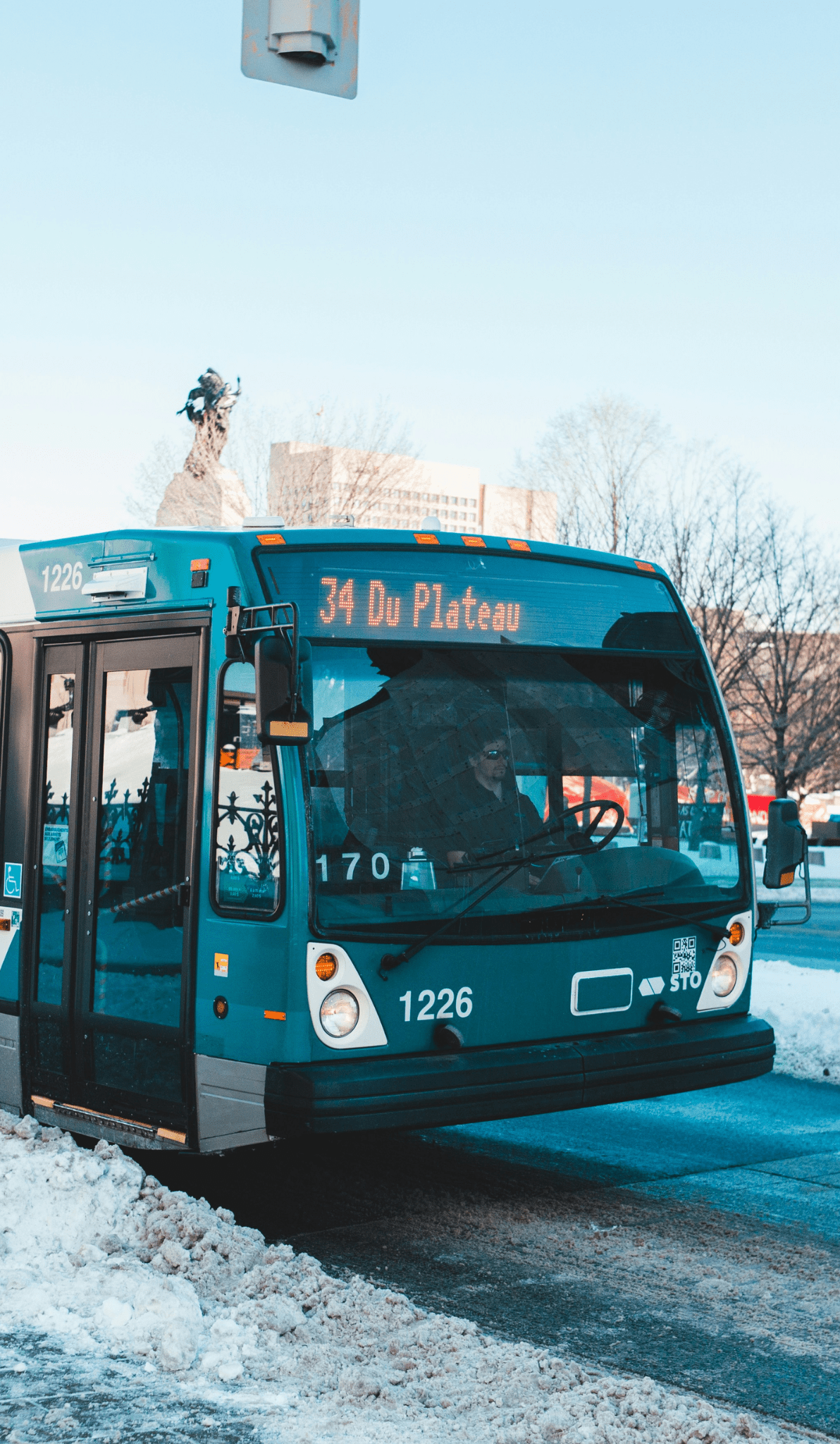Our latest report has modeled what is actually possible if federal and provincial governments take public transit seriously as a tool to fight climate change.
We’ve found that Canada can set a target to double public transit ridership by 2035 and actually achieve it. By providing public transit operating funding, encouraging housing density near public transit, setting zero-emission bus procurement requirements and providing incentives for cities to speed up public transit service with dedicated bus lanes, Canada can cut polluting carbon emissions by 65 million tonnes from 2024 to 2035. This is equivalent to the annual carbon emissions produced by 20 million cars.
Right now, public transit isn’t being used to its full potential. Due to infrequent and unreliable public transit, the majority of Canadians are forced to drive cars to meet their daily needs, even if they can’t afford it. This is one of the main reasons why transportation is the second largest source of carbon pollution in Canada.
Meanwhile, the situation for those who rely on public transit to get around is getting worse. Many public transit systems are struggling financially, forcing them to cut service and hike fares. This just makes transit agency deficits worse by chasing away more riders, and creates a vicious cycle known as the downward spiral. This could lead to the decline of public transit in Canada, just when we need it most as a clean and affordable climate solution.
Low income people bear the brunt of cuts to public transit. They face longer waits that could make them late for work, putting their jobs in jeopardy. This disproportionately affects racialized people. Racialized Canadians account for just over one-quarter (26.5 per cent) of all employed workers, but make up 56.3 per cent of all commuters who get to work by public transit.
Our latest report outlines that public transit service levels are now on average, 7 per cent lower than they were in 2016, the year that the federal government began its transit infrastructure funding program. There were fewer buses in service in peak periods across Canada in 2022 than there were in 2013, a year when transit systems served 2.7 million fewer people.
You have probably heard the federal government announce that billions of dollars are being invested in public transit. You might ask yourself – if so much money is going towards public transit, how is it possible that the situation is getting worse for everyday public transit service?
While the federal government invests billions into public transit expansion, no money is provided to actually run all this extra service. This means we are left with 1,700 buses that could be in service but instead sit idle, gathering dust because municipalities can’t afford to run them. Pandemic-related revenue losses and service cuts have only made this problem worse, because municipalities aren’t allowed to borrow money or levy the kinds of taxes that other countries use to pay for transit service.
Public transit systems are at a turning point. As Canada develops new infrastructure funding agreements with provinces and cities, it can put public transit systems on a road to recovery that increases ridership, reduces pollution and makes life more affordable. For that to happen, some of the revenues that city residents pay to provincial and federal governments in income and sales taxes need to be given back to those cities in the form of funding for day-to-day public transit service. That way, all the extra buses and trains that federal and provincial governments have bought can actually be put into service and used towards getting people out of polluting cars and cutting carbon emissions.
Canada currently has goals to increase the adoption of zero-emission vehicles but no targets to increase the use of public transportation and active transportation (such as walking and cycling). We think that’s an important missing piece in Canada’s climate plan.
There is no reason why a rich and developed country like Canada cannot provide the fundamental service of fast, affordable, convenient and reliable public transit to its citizens. Canadians deserve no less than what other rich and developed countries have as basic ‘table stakes’ for participation in society. Instead of grinding our cities to a halt with gridlock, we can instead choose to grow public transit systems and leverage infrastructure investments to shift the design of our cities to support higher public transit use, less traffic, housing abundance and zero emissions mobility that is universally accessible to all.









